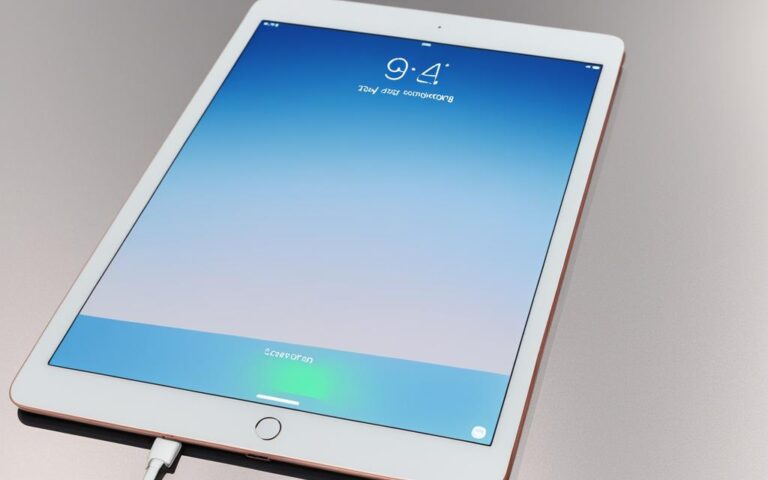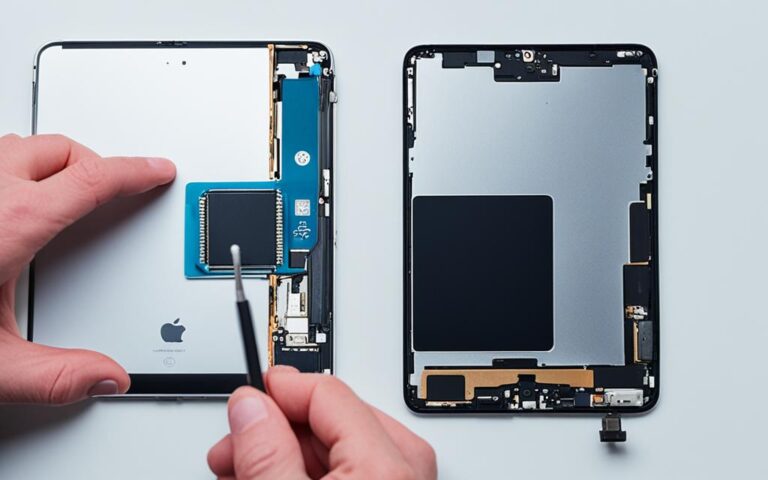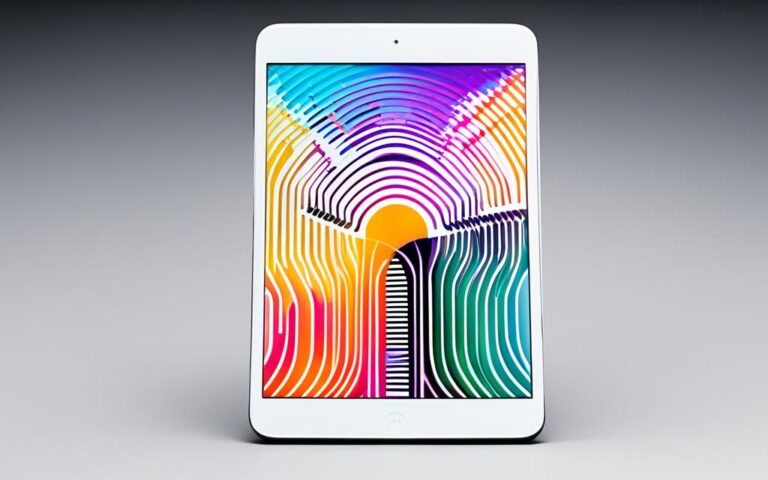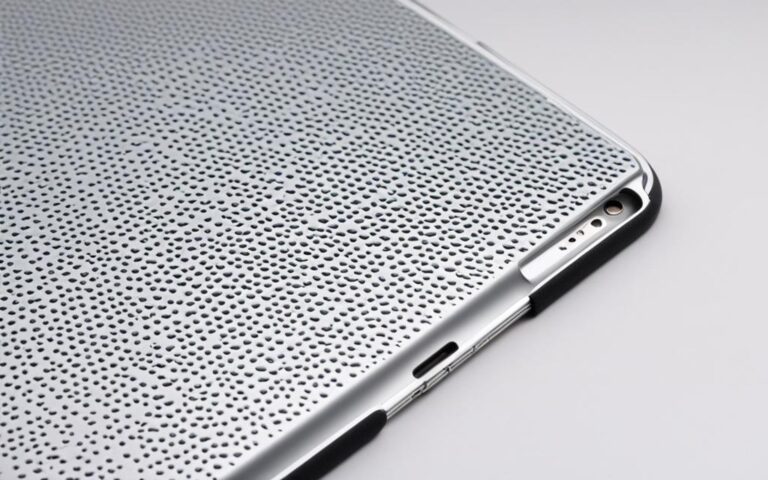Resolving iPad Pro Wi-Fi Connectivity Problems
If you’re experiencing Wi-Fi connectivity issues on your iPad Pro, you’re not alone. Many users encounter difficulties with their device’s Wi-Fi connection, which can be frustrating and hinder productivity. However, there are several troubleshooting steps you can take to resolve these problems and get your iPad Pro connected to the internet seamlessly.
First, it’s important to ensure that you are within range of your Wi-Fi router. The distance between your iPad Pro and the router can affect the strength of the signal and connection stability. Make sure that you are in close proximity to the router for optimal connectivity.
Next, check the Wi-Fi settings on your iPad Pro. Ensure that Wi-Fi is turned on by navigating to the Settings app and selecting Wi-Fi. If Wi-Fi is already enabled, you might need to enter the password for your Wi-Fi network. Double-check that you have entered the correct password to avoid any authentication issues.
If you’re still unable to connect to Wi-Fi, try restarting your devices. Power off both your iPad Pro and your router, wait for a few seconds, and then turn them back on. Sometimes, a simple restart can resolve temporary connectivity glitches.
Another troubleshooting step is to reset the network settings on your iPad Pro. This action can help clear any potential conflicts or incorrect configurations that may be causing the Wi-Fi connectivity issues. To reset network settings, go to Settings, select General, then tap on Reset, and choose Reset Network Settings.
If none of the above steps resolve the problem, consider updating the firmware on your router. Manufacturers often release firmware updates to improve performance and address known issues. Visit your router manufacturer’s website or contact their support for instructions on how to update the firmware.
Lastly, if you’ve tried all the troubleshooting steps and the Wi-Fi issue persists, it may be necessary to contact your internet service provider for further assistance. They can help diagnose any potential connectivity problems on their end and provide additional solutions to get your iPad Pro connected.
By following these troubleshooting steps, you can resolve iPad Pro Wi-Fi connectivity issues and enjoy uninterrupted internet access on your device. Stay connected and productive with your iPad Pro by implementing these solutions.
Checking Wi-Fi Network and Settings
To troubleshoot Wi-Fi connectivity issues on your iPad Pro, it’s essential to start by checking the Wi-Fi network and settings. Follow these steps to ensure a seamless connection:
- Enable Wi-Fi: Open your device settings and ensure that the Wi-Fi feature is turned on.
- Connect to Wi-Fi Network: Tap on the name of your Wi-Fi network and make sure that you are connected.
- Invalid Password: If you encounter an error message stating “unable to join the network” or “incorrect password,” try restarting your devices and entering the password again.
- No Internet Connection: If there is no internet connection or if you’re unable to connect to your network, ensure that your router is properly connected and turned on.
- Restart Devices: Restarting your iPad and router can often help resolve connectivity problems.
If you are still unable to connect to the Wi-Fi network, consider the following:
- Reset Network Settings: In your iPad Pro settings, you can choose to reset network settings, which may help resolve any configuration issues.
- Update Router Firmware: Check for firmware updates for your router and install them to ensure compatibility with your devices.
By following these steps, you can troubleshoot and fix Wi-Fi connectivity issues on your iPad Pro, ensuring a stable and fast connection.
| Common Wi-Fi Issues | Possible Solutions |
|---|---|
| Unable to join Wi-Fi network | Check network name and password, restart devices |
| No internet connection | Ensure router is properly connected, restart devices |
| Weak Wi-Fi signal | Move closer to the router, remove obstructions |
| Interference from neighboring networks | Change wireless channel on router |
Addressing Signal Quality and Interference
When it comes to Wi-Fi connectivity on your iPad Pro, signal quality and interference can play a significant role. Low signal strength and physical obstructions can hinder your device’s ability to connect to Wi-Fi networks. To overcome these challenges, here are a few steps you can take:
1. Checking for Obstructions
Inspect your surroundings for potential obstructions that may interfere with the Wi-Fi signal. Thick walls, metal objects, cabinets, mirrors, and glass can all hinder wireless transmission. By identifying and eliminating these obstructions, you can improve your iPad Pro’s Wi-Fi connectivity.
2. Relocating Your Router
Consider moving your router or access point to an elevated position within the room. By placing it higher up, you can minimize the impact of physical barriers and boost the Wi-Fi signal strength. Experiment with different locations to find the best spot for optimal connectivity.
3. Dealing with Interference
Neighboring wireless networks and devices operating on the same frequency can cause interference, leading to a weaker Wi-Fi signal. To address this issue, change the wireless channel on your router or access point. In the United Kingdom, channels 1, 6, and 11 are recommended as they are non-overlapping channels.
4. Optimizing Wi-Fi Settings
It’s worth exploring your router’s settings to optimize Wi-Fi performance. This may include adjusting transmit power levels, enabling band steering, or configuring Quality of Service (QoS) settings to prioritize specific devices or applications. Refer to your router’s manual or manufacturer’s website for detailed instructions on how to make these adjustments.
5. Consider Wi-Fi Extenders
If you’re still experiencing weak Wi-Fi signal despite implementing the above measures, you may want to consider using Wi-Fi extenders or mesh systems. These devices can help expand the coverage area and enhance overall signal strength throughout your home or office.
By addressing signal quality and interference, you can significantly improve Wi-Fi connectivity on your iPad Pro. The key is to assess your environment, troubleshoot physical obstructions, optimize router settings, and minimize interference from neighboring networks. With a stronger and more reliable Wi-Fi signal, you can enjoy uninterrupted internet access on your iPad Pro.
Updating Firmware and Router Settings
To ensure optimal Wi-Fi connectivity on your iPad Pro, it’s important to keep both your device’s firmware and router settings up to date. By regularly checking for firmware updates and customizing your router settings, you can address any potential issues and enhance wireless security.
Firstly, let’s talk about firmware updates for your iPad Pro. Apple frequently releases firmware updates to fix bugs, improve performance, and enhance Wi-Fi connectivity. To check for updates, go to the “Settings” menu on your iPad Pro, navigate to “General,” and then select “Software Update.” If an update is available, follow the on-screen instructions to install it. Keeping your firmware up to date ensures that your device is equipped with the latest features and optimizations.
Next, let’s dive into router settings. Your router settings play a crucial role in establishing a stable Wi-Fi connection. One vital setting to customize is the network name, also known as the SSID (Service Set Identifier). Avoid using default names like “Linksys” or “Netgear” as they make it easier for potential attackers to identify your network. Instead, choose a unique and memorable name that does not disclose personal information.
Wireless security is another essential aspect of router settings. It is recommended to use either WPA (Wi-Fi Protected Access) or WPA2-Personal as your security key. These encryption protocols provide stronger security compared to older standards like WEP (Wired Equivalent Privacy). To configure your security settings, access your router’s admin panel via a web browser and navigate to the wireless settings. There, you can select the desired security protocol and set a strong password consisting of a combination of letters, numbers, and special characters.
If you have followed the above steps and are still experiencing Wi-Fi connectivity issues, it may be necessary to upgrade the firmware of your router. Router manufacturers often release firmware updates to address bugs, enhance compatibility with wireless devices, and improve overall performance. To upgrade your router’s firmware, refer to the manufacturer’s instructions or visit their official website for the latest firmware versions and installation procedures.
Benefits of Updating Firmware and Router Settings
Updating the firmware on your iPad Pro and customizing your router settings offer several benefits:
- Improved Stability: Firmware updates often address known issues that may cause Wi-Fi connectivity problems, ensuring a stable and reliable connection for your iPad Pro.
- Enhanced Security: Customizing your router settings, especially wireless security protocols, helps protect your network from unauthorized access and safeguards your personal information.
- Optimized Performance: Firmware updates and router settings optimization can boost the overall performance of your Wi-Fi network, allowing for faster data transfer speeds and reduced latency.
By staying up to date with firmware updates and prioritizing router settings customization, you can maximize the potential of your iPad Pro’s Wi-Fi connectivity and enjoy a seamless online experience.
Conclusion
Resolving Wi-Fi connectivity problems on your iPad Pro can be achieved by following the steps provided in this guide. Ensuring that you are within range of your Wi-Fi router, checking network settings, and restarting devices if necessary are the basic troubleshooting steps to address any Wi-Fi connectivity issues. It is also important to address signal quality and interference by removing obstructions and minimizing interferences from neighboring networks and devices. Keeping your iPad Pro’s firmware updated and customizing your router’s wireless settings can also help improve connectivity.
If you have followed these steps and are still experiencing Wi-Fi problems, it is recommended to contact your internet service provider or reach out to Apple for further assistance. They can provide additional troubleshooting steps and guidance specific to your situation. Remember, with the right troubleshooting measures, you can enjoy seamless online browsing and resolve Wi-Fi connectivity problems on your iPad Pro.
Remember to regularly update your devices and maintain a secure and reliable Wi-Fi network to ensure optimal performance. By taking the necessary steps, you can make the most of your iPad Pro’s Wi-Fi capabilities and stay connected wherever you go.












